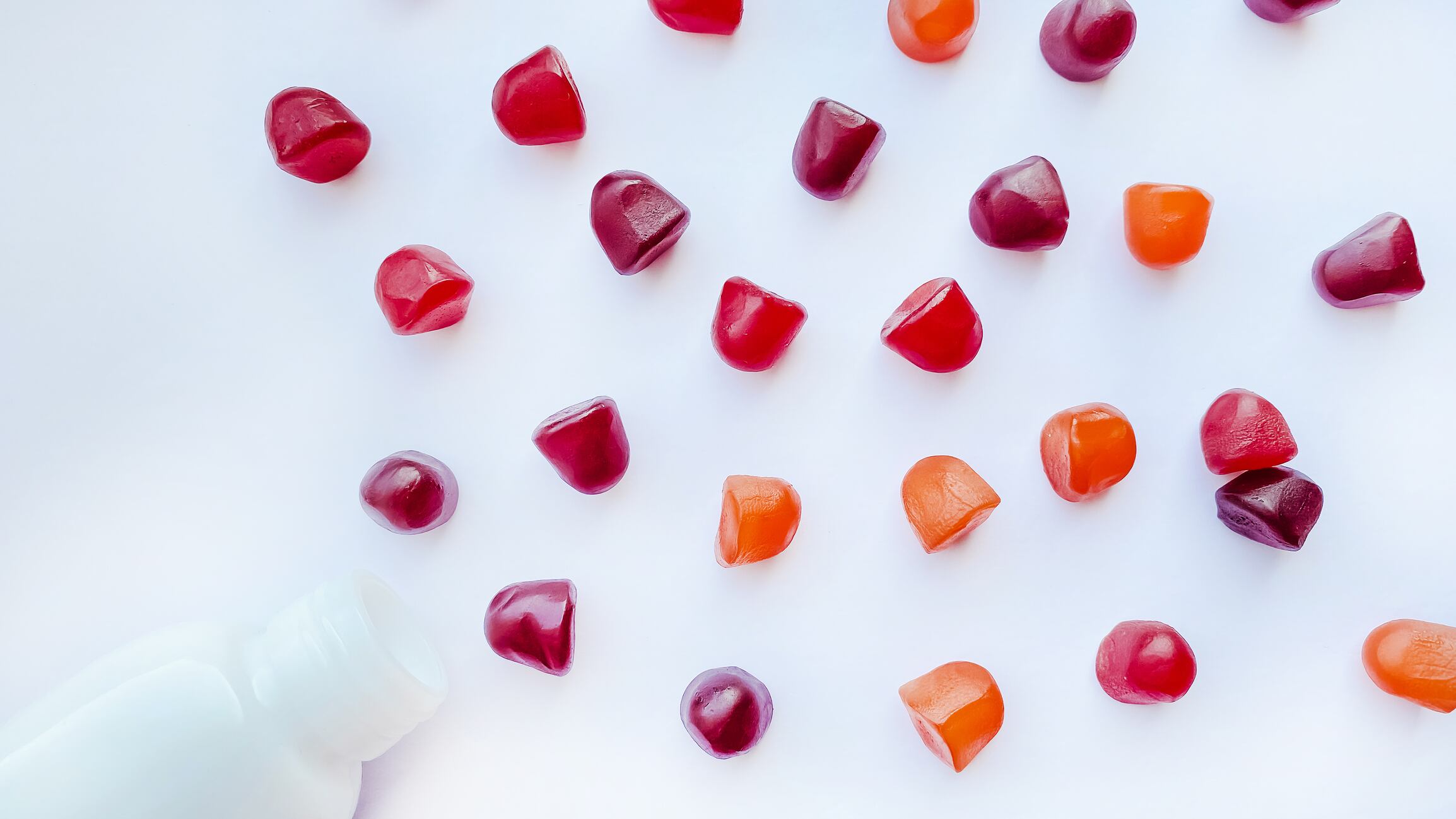Ordinary gummies traditionally contain large amounts of sweeteners such as sucrose, glucose syrup, and gelatin, crucial for consumer acceptance due to taste and texture.
When trying to reduce calorie count, sucrose is the most commonly used sweetener, but it has gradually been replaced by artificial sweeteners because of its high glycemic index.
Although artificial sweeteners almost have no calories, there is still a concern for potential safety hazards.
Maltitol and erythritol are considered good alternatives due to the limited hydrolysation by the human enzyme system, which induces little effect on glucose metabolism.
Recent research has reported that the composition and concentration of sugar alcohols have an impact on the texture and gelling properties of hydrogels, and the change in gel texture would further affect digestion and glucose release in the digestive tract.
However it was previously unclear how maltitol and erythritol affect the structure of gummies and how they affect humans’ blood sugar homeostasis.
Sirio therefore conducted the current prospective crossover study, involving 17 healthy participants, to investigate the effects of the gummy dosage form and sugar types on the glycemic response control.
Maltitol and erythritol as sweetener alternatives were applied in gummy candies (total and partial sugar substitutes gummy, T-SG and P-SG), with sucrose-based gummies used as comparisons (CG).
The effects of different types of gummies on glycemic response in healthy adults were evaluated on the basis of the participants’ glycemic index (GI) and glycemic load (GL) values.
The researchers conclude that all three types of gummies slowed down subjects’ glycemic response when not taken in excess, adding that "gummies are a good carrier for dietary supplements due to their sustained-release characteristic of available carbohydrates and provide healthier options for people in control of glucose homeostasis".
Results
A total of 17 participants (22–39 years old, 5 males and 12 females) completed this study,
The three types of gummy candies used in the present study all contributed to a reduced postprandial glycemic response when taken within the recommended dosage. Only the P-SG and T-SG were low-GI foods, and the CG was a high-GI food.
Glucose release was assessed using an in vitro digestion model. Experimental results showed that, compared with high-GI food, low-GI gummies exhibited significantly improved postprandial glycemia, regardless of available carbohydrate levels. In part, this is due to the texture differences created by the sweeteners used in the gummies, which affects digestive behaviours and the subsequent glucose release after oral administration.
Gummy candies with low GI values were proven to be healthier options for customers following weight management programs and for preventing chronic disease.
Methods
Participants underwent two glucose tests and three sample gummies tests (CG, P-SG and T-SG). To arrange the five tests in five groups in an orderly manner without missing any tests, we used the staggered method.
The sugars used in the sucrose-based gummies (CG) were from glucose syrup, sucrose, and concentrated apple juice.
In the partial sugar substitutes gummies (T-SG and P-SG), sugars were replaced by maltitol syrup, erythritol. A little concentrated apple juice was also included in the P-SG gummies.
Tests were carried out on five non-consecutive days with intervals of at least 72 h between each testing day. The day prior to the experiment, a unified dinner was provided to the volunteers in a specified time range to control their protein and fiber intake. The participants were advised to avoid strenuous exercise, smoking, or alcohol consumption, and were instructed to fast for at least 10 hours. Fasting glucose tests were performed twice with a 5 min interval. CG, P-SG, and T-SG with 250 mL of water and glucose solution (10 g of glucose dissolved in 250 mL of water) were consumed within 5 min.
Each group received a different amount of gummy according to their weight to ensure the amount of carbohydrates available was the same. Subsequent blood glucose tests were carried out 15, 30, 45, 60, 90, and 120 min after food consumption. The fasting glucose test and the subsequent blood glucose tests were all performed by Accu Chek performa (Roche Diagnostics). Participants consumed reference food (glucose solution) twice and each tested food (the three types of gummy candies) once.
Each participant performed four tests with each sample and recorded the changes in blood glucose after food consumption.
Source: Gels
https://doi.org/10.3390/gels8100642
"Intake of Sugar Substitute Gummy Candies Benefits the Glycemic Response in Healthy Adults: A Prospective Crossover Clinical Trial"
Gan, D.; Xu, M.; Chen, L.; Cui, S.; Deng, C.; Qiao, Q.; Guan, R.; Zhong, F.


